One of Japan’s defining features in the media world is the intrepid desire to attach a creator’s name to a project or series. In this vein, composer Koichi Sugiyama and illustrator Akira Toriyama defined the Dragon Quest series, while Yoji Shinkawa and Hideo Kojima were instrumental in the development of both Metal Gear Solid and Zone of the Enders. Among this list, few are as well regarded as Final Fantasy character designer Yoshitaka Amano.
An established illustrator and costume designer in his own right, Yoshitaka Amano : Illustrations is a 128-page jaunt through some of Amano’s sketches and fine art collections from Final Fantasy, Vampire Hunter D, Speed Racer, and his Hero series, accompanied by interviews covering his inspirations and thoughts on the differentiation between independent work and creating for a product.

Slightly smaller than an A4 visual journal, Yoshitaka Amano : Illustrations is separated into 15 segments, some only a couple of pages in length, though all distinct in theme and purpose. Most pages display between 1 and 6 illustrations from Amano’s illustrious career, with little else but the odd cursive title and simple serif font used to break up this pattern.
Backgrounds are generally white; however, some pages diversify the experience by using bold, vivid colours to juxtapose the darker components of Amano’s work. The work itself is an assortment of gestural sketches, leaving large amounts of white space to exemplify facial features, while others combine complex patterned architectural visages and elaborate costumes with the same simplistic facial patterns.
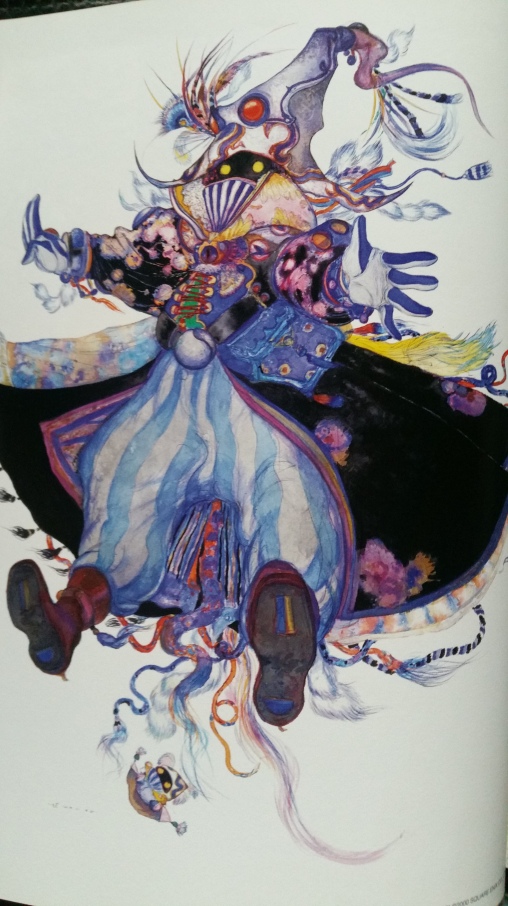
Amano’s fine works are a more Pop Art aligned affair with swatches of intense, fastidious blocks of colour that organically present the freedom and child like wonder of a hallucinogenic dreamscape. Even his character deigns share compositional similarities to Gustav Klimt’s paintings.
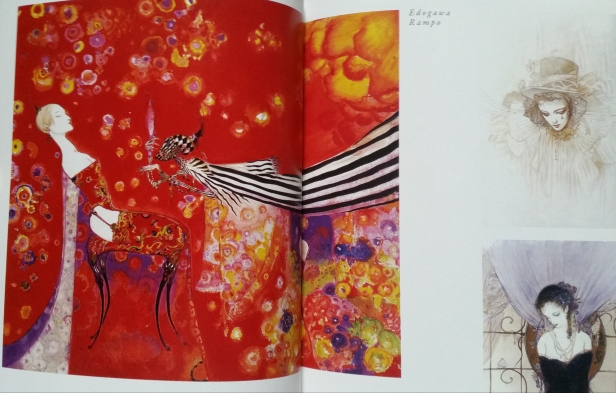
Klimt himself was an Austrian painter that straddled the line between fine art and decorative work, operating in both, opposing worlds. Amano’s similar interposing in both contemporary spheres is far from the only similarity however, as the visual noise and harmonious colour bands of Klimt’s backgrounds, coupled with scenes of human intimacy is a common thread amongst Amano’s work too.
The starting artworks, and those towards the middle of Yoshitaka Amano : Illustrations are a concoction of shapes, freeform linework and soft watercolour that both assault and calm the senses in equal measure. The other sections are dedicated to more delicate sketch work and passages of text that define Amano’s underlying thought processes.
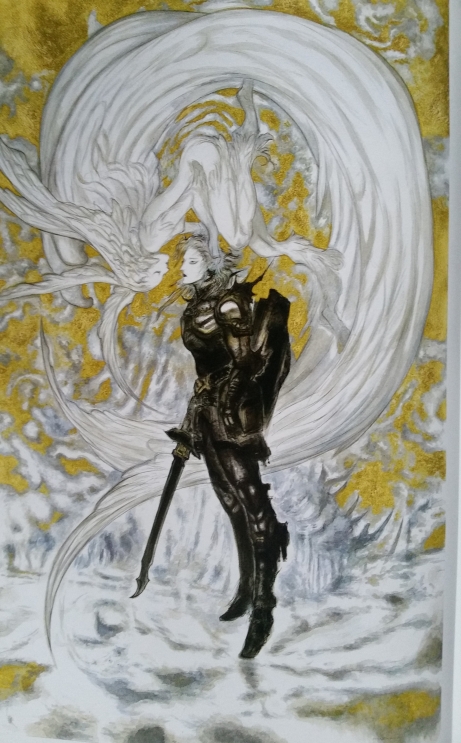

Sparse paragraphs of text litter the first half of the book, briefly describing the subject of each section. Alternatively, the second part has a dense range of interviews, work processes and descriptive passages that identify his general belief systems.
These parts never obfuscate or overshadow the illustrative work, but compliment it, adding some much-needed context to a range of creations. In essence, this is one of the best information to content ratios that I’ve seen, with highly pertinent text used only when appropriate.
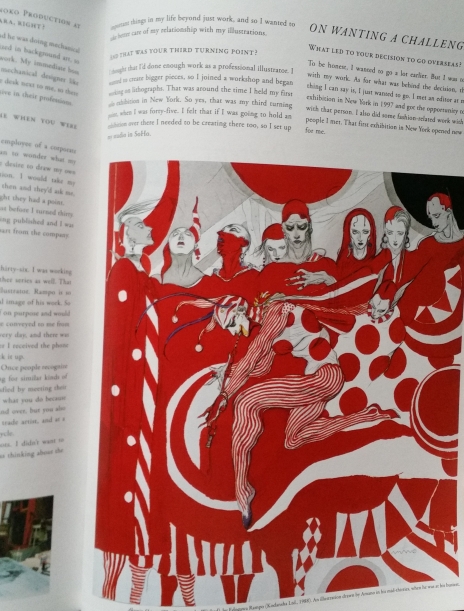

My two favourite sections include a brief quote about the liberation of colour across his artistic library, as well as an interview in which Amano describes the trials and troubles present in his early career as a character designer.

Despite the myriad of beautiful work from the Final Fantasy series and Amano’s original fine art runs, a singular illustration from vampire Hunter D is unquestionably the most arresting work in this entire publication.
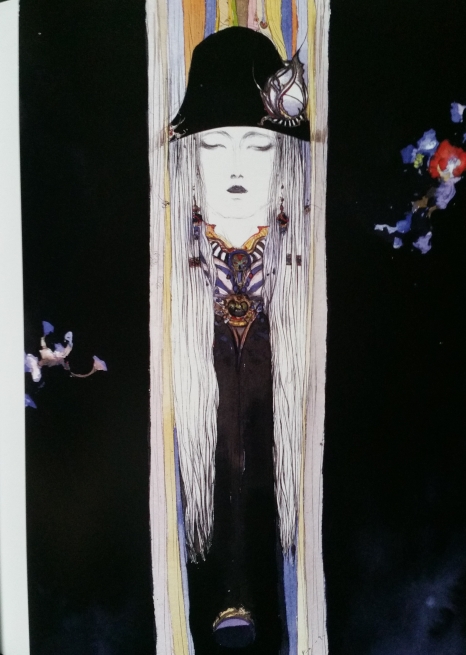
Incorporating Amano’s soft, feathering facial work, cocooned by a membrane of silver hair and pastel stripes. The left and right thirds are oppressive black slabs, pierced by the fragility of a wreath of flowers, their purple matching with the faint mist resting at the bottom. The contrasting tones present in the face and the composition’s extremities create a striking feature, whilst the simplistic line work in the centre is undercut by the elaborate cravat just below the neck.
This, much like Amano’s fine art, contains a tantalising elegance absent from most design work associated with gaming.
Aside from Vampire Hunter D, Amano’s Final Fantasy and fine art exhibitions drew me the most, as I spent an embarrassingly long time studying the large-scale work from Amano’s solo exhibitions.


Personally, much of the artwork in the book is invigorating, and on some level, inspirational. In saying this though, some of the sketches are particularly jarring. Sketches of Men / Sketches of Women are great, providing an unfettered observation into Amano’s human forms, however sketches of flowers and sketches of vegetables dilute this premise, and bring nothing else interesting to the table.
This is a phase in Amano’s career that I find exceptionally uninteresting, and one that occupies over 10% of the publication. Aside from this particular quirk, the presentation of the product is clean, and provides a great deal of interesting work. If you can find the book for the discounted price that I did, then I wholeheartedly recommend it. After all, everyone needs a little Amano in their world.
Title: Yoshitaka Amano : Illustrations
Author: Yoshitaka Amano
Publisher: Viz Media
Year of publication: 2016
Pages: 128
Size: 210 x 279 x 10mm
Price at Purchase: $21.28 Aud
ISBN10 – 1421589575
ISBN13 – 9781421589572

